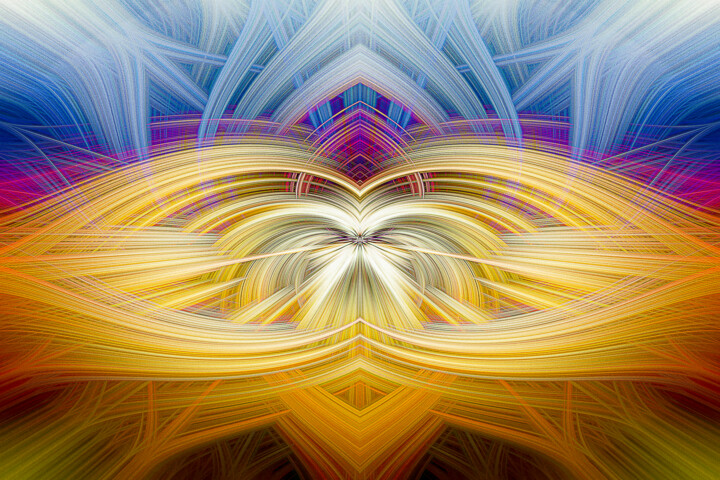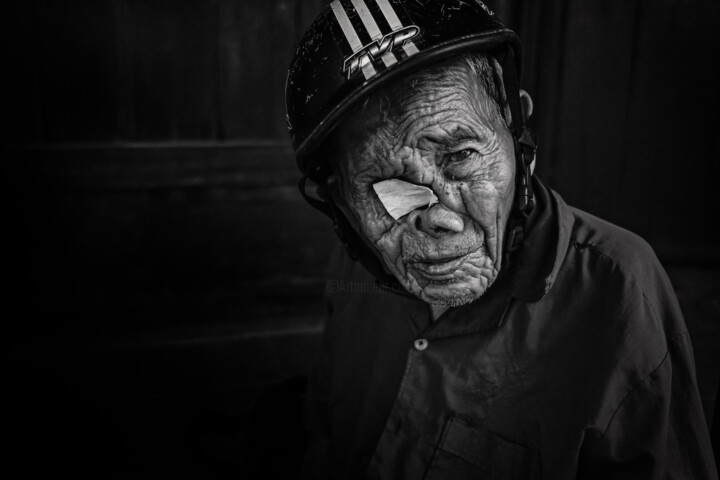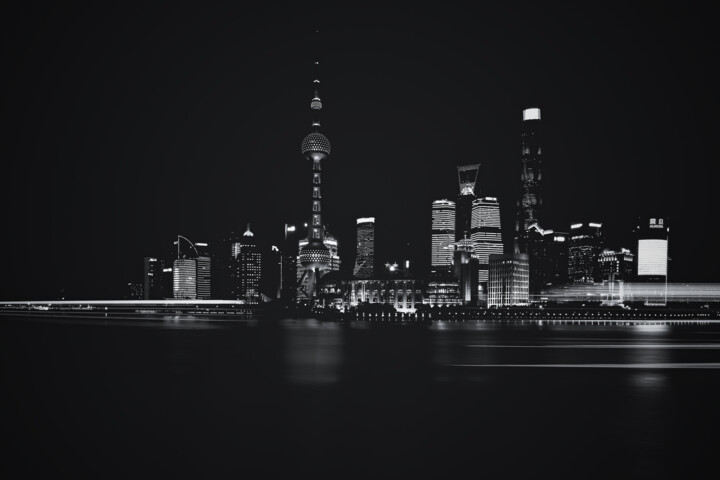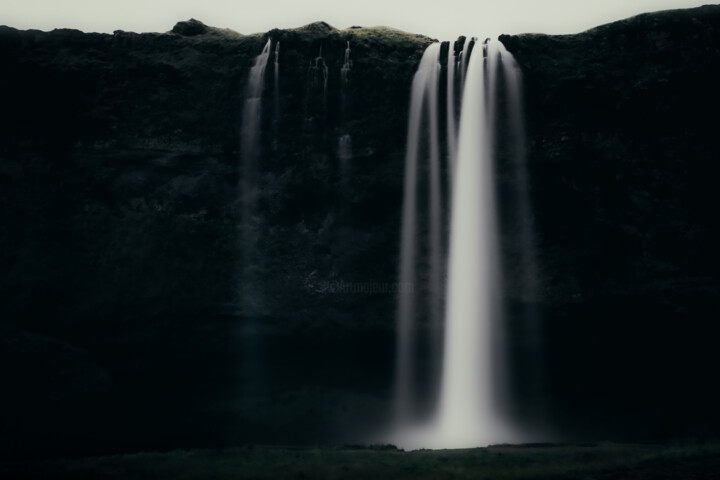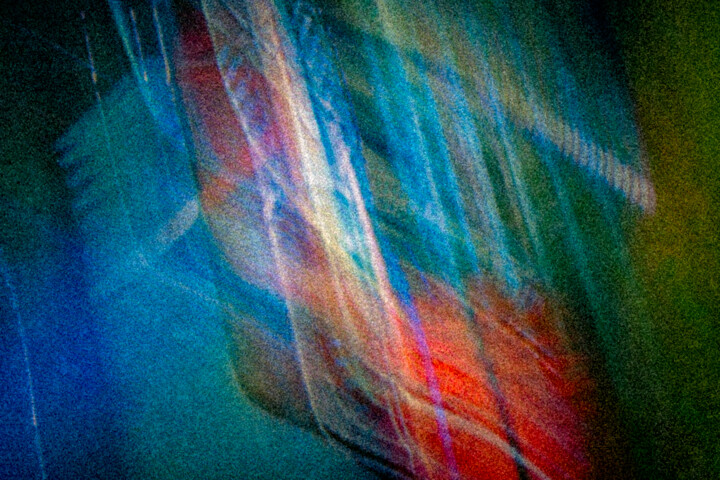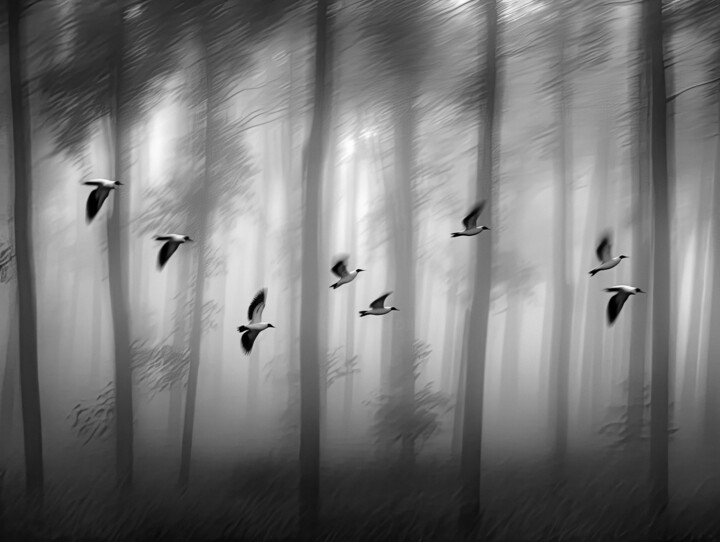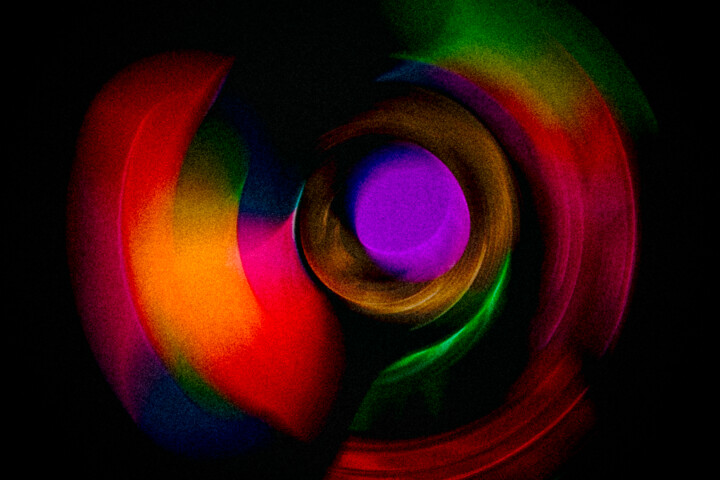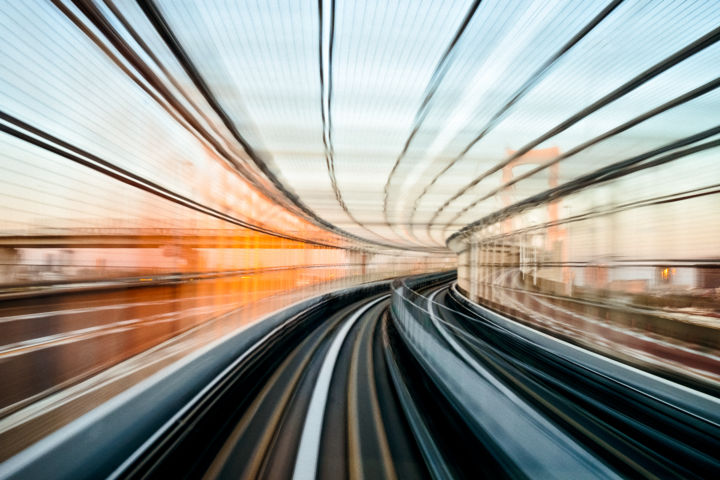What inspired you to create art and become an artist? (events, feelings, experiences...)
Probably because my education and personal quest is deeply related to philosophy and zen esthetic, the inception of my artistic journey was imbued with the profound recognition that art serves as a method for transcendence, a portal through which we navigate the intricacies of the human experience. I was inspired by the realization that within the medium of photography, I could capture not just the visible world, but the ineffable emotions, the ephemeral moments that often elude verbal expression.
My journey began as a response to the silent poetry of the world, sparked by fleeting moments and the endless emotions they carried. It was in the relation of light and shadow, the interplay of colors and contrasts, I hope, that I found the means to transcribe the intangible into tangible expressions of beauty and meaning.
What is your artistic background, the techniques and subjects you have experimented with so far?
From the very beginning, I embraced the notion that creativity knows no bounds, and my artistry has been an evolving testament to this belief.
In the realm of photography, I have ventured into various techniques and styles, from the timeless elegance of black and white photography to the vibrant and immersive world of color.
Regarding subjects, I've been captivated by the multifaceted beauty of the world. I've traversed the intricate urban landscapes, capturing the pulse of bustling cities, while also finding serenity in the quietude of nature's grandeur. Portraiture, with its capacity to illuminate the depths of the human spirit, has been a constant muse, as has abstract photography, where I revel in the ethereal qualities of form, color, and light.
My artistic journey, however, extends beyond the mere technical and subject matter. It delves into the philosophical and metaphysical, exploring the interplay between reality and perception, delving into the enigmatic world of abstract and minimalistic photography where the image becomes a vehicle for conveying ideas and emotions, rather than mere visual records.
What are the 3 aspects that differentiate you from other artists, making your work unique?
Distinguishing oneself as an artist is a dangerous endeavor, as the art world is teeming with exceptional talents. However, I believe there are three aspects that set my work apart and make it with a unique character:
Zen Aesthetics: This distinct feature imbues my creations with an emphasis on simplicity, balance, and harmony. It's a unique quality that brings a sense of meditative calm and an intimate connection to the world, setting my work apart from others.
Poetic Narratives: I consider my photography a form of visual poetry. Every image I create is a stanza, a moment, a verse, capturing the cadence of life and the harmonious dissonance of existence. Whether through the play of light and shadow or the resonance of colors, my photographs unfold as verses, inviting viewers to explore the lyrical dimensions of life.
Emotional Resonance: I strive to create art that transcends the visual to touch the emotional core of the audience. Through the interplay of light, composition, and subject, I think my work has the potential to evoke a wide spectrum of emotions, fostering a profound connection between the viewer and the image.
These three facets collectively shape my artistic identity, marking my work as a convergence of intellectual curiosity, poetic narratives, emotional resonance, and a multidisciplinary approach. Through this unique blend, I aspire to provoke contemplation, evoke sentiment, and offer a multi-dimensional artistic experience that sets my work apart in the ever-evolving landscape of art and photography.
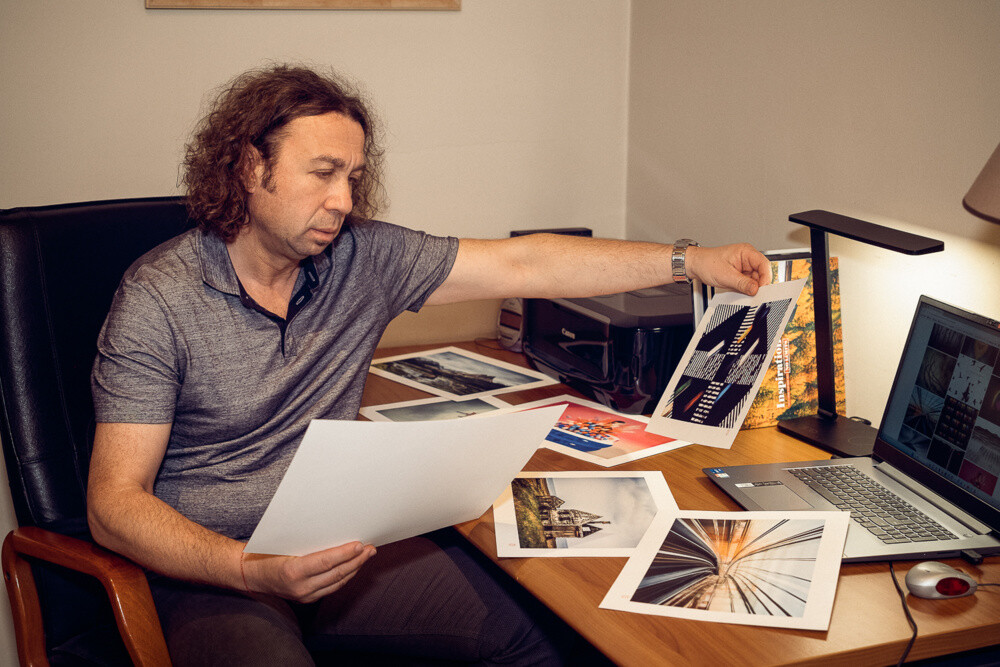 Where does your inspiration come from?
Where does your inspiration come from?
My wellspring of inspiration is relating to the next aspects.
Nature's Elegance: The natura has been a perennial muse to me. From the serenity of a misty forest at dawn to the tumultuous grandeur of a thunderstorm, I find profound inspiration in nature's timeless beauty and its ceaseless cycles.
Human Experience: The world of human emotions, stories, and experiences is an inexhaustible source of inspiration. Each face I photograph, each life story I encounter connects with my source of creative energy. Capturing the essence of the human condition is an enduring theme in my work, as I seek to unveil the universal threads that bind us.
Zen: My artistic inspiration is deeply rooted in the profound simplicity and mindfulness of Zen aesthetics and philosophy. The Zen way of perceiving the world around us influences every facet of my work, and adding delicate intellectual depth. I seek to capture the beauty of the present moment, allowing viewers to engage with the calm, clarity, and depth that Zen teachings inspire. This influence infuses my art with a unique serenity, inviting viewers to contemplate the world through a Zen like approach, where each photograph is a meditative glimpse into the essence of existence.
Cross-Disciplinary Exploration: I am a firm believer in the power of interdisciplinary exploration. Music, cinema, and other art forms are not separate realms but rather contiguous landscapes that intersect with photography. Drawing inspiration from these diverse fields, I aim to break free from traditional artistic boundaries and forge new connections that enrich my work.
What is your artistic approach? What visions, sensations or feelings do you want to evoke in the viewer?
My artistic approach is an amalgamation of philosophical inquiry, Zen aesthetics, and the desire to evoke profound responses in the viewer. I aim to create a visual narrative that transcends the ordinary and delves into the extraordinary.
My primary vision is to invite viewers into a state of contemplation and mindfulness. I seek to awaken in them a sense of serenity and wonder, much like the feelings that arise during moments of Zen experience. Through composition, lighting, and subject matter, I endeavor to capture the beauty of the present moment, emphasizing the harmony of simplicity and depth.
I want my work to evoke a range of emotions, from the tranquility of a quiet moment in nature to the depths of introspection that philosophy inspires. Each photograph is a portal to an unique experience, provoking viewers to explore their own perceptions, emotions, and contemplative tendencies. I aim to create an artistic space where viewers can lose themselves in the image, and in doing so, find themselves anew.
What is the process of creating your works? Spontaneous or with a long preparatory process (technical, inspiration from art classics or other)?
My creative process is a delicate balance between spontaneity and thoughtful preparation, a dance that harmonizes the ephemeral with the meticulous. It draws from both the Zen principle of being present in the moment and a reverence for the art classics.
The initial spark of inspiration often strikes spontaneously, whether it's an ethereal play of light on a city street or the serenity of a natural landscape. In those moments, I capture what I call "raw inspiration" with spontaneity, allowing the beauty of the moment to guide me.
However, this spontaneous capture is just the beginning. The true alchemy occurs during the post-production process, where I draw from a solid fundament of technical knowledge and my understanding of art history. I may find inspiration from classic or contemporary art, cinematography, or philosophy that lends itself to the transformation of the raw image into a finished work of art where I pay attention to every detail, from composition to color balance.
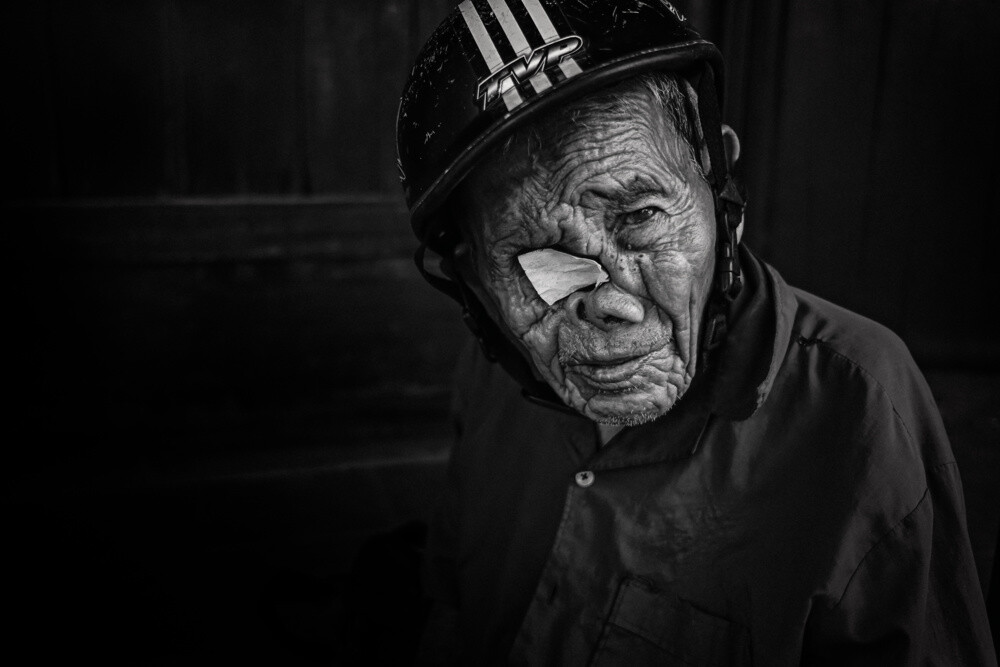 Do you use a particular work technique? if so, can you explain it?
Do you use a particular work technique? if so, can you explain it?
Certainly, I employ a distinctive work technique that draws from both artistic traditions and contemporary photography. My approach can be characterized as a synthesis of multiple techniques and principles. Allow me to elaborate:
Observational Mindfulness: Central to my technique is the practice of observational mindfulness, influenced by Zen philosophy. Before I even pick up my camera, I immerse myself in the present moment, observing my surroundings with full awareness. This mindfulness helps me attune to the subtle nuances of the world and perceive its deeper layers, often hidden from casual observation.
Composition and Framing: Once I've connected with the moment, I utilize classic principles of composition, such as the rule of thirds, leading lines, and balance, to create a visually engaging frame. Composition is a cornerstone of my technique, as it allows me to guide the viewer's eye and evoke specific emotions and sensations.
Light and Shadow: I also pay meticulous attention to the interplay of light and shadow. Light, with its capacity to reveal and conceal, is a fundamental element in my work. It can accentuate texture, emphasize depth, and set the mood. I often experiment with different lighting conditions, from the soft glow of sunrise to the stark contrasts of midday, to imbue my photographs with the desired emotional resonance.
Post-Processing as Artistry: In the digital realm, my technique extends to the post-processing phase. Here, I treat each image as a digital canvas, applying both technical enhancements and artistic alterations. It's during post-processing that I may draw inspiration from various art traditions, introducing elements that evoke a specific ambiance or thematic underpinning. This step allows me to transform the raw capture into a refined work of art.
Experimentation and Innovation: My technique is never stagnant; it's a constantly evolving journey. I'm always open to experimentation with new technologies, equipment, and artistic approaches. The willingness to embrace innovation while respecting timeless principles keeps my technique fresh and adaptable.
Are there any innovative aspects in your work? Can you tell us which ones?
In my artistic journey, I embrace both classical photographic techniques and cutting-edge innovations. While I draw inspiration from traditional methods such as double exposure, long exposure, and Intentional Camera Movement (ICM), I've also ventured into the realm of Artificial Intelligence (AI) to push the boundaries of art in exciting new directions.
Recently, I've been experimenting with visual content generated by AI. This represents the next frontier in art for me, a realm that brims with untapped possibilities and potential. AI allows me to explore novel avenues of creativity by leveraging algorithms and machine learning to generate images and concepts that challenge conventional artistic norms.
The fusion of classical techniques with AI-driven content creation fosters a dynamic interplay between the human and the machine, giving rise to art that blurs the lines between the organic and the synthetic. It's a testament to the ever-evolving nature of the art world, where innovation and experimentation open doors to uncharted artistic territories.
Incorporating AI into my work not only expands the scope of my creativity but also underscores the intersection of art, technology, and the human imagination, where the possibilities are as limitless as the boundless realm of the artistic spirit.
Do you have a format or medium that you are most comfortable with? if yes, why ?
While I appreciate the diversity of formats and mediums available in the world of art and photography, I must confess to a certain comfort with a particular format. The medium that resonates with me the most is the black and white photograph.
There's a timeless elegance in monochrome that captivates me. The absence of color allows for a deep exploration of contrast, form, and texture. It encourages viewers to engage with the essence of the image, devoid of the distractions that color can sometimes introduce.
Black and white photography is a medium that echoes the philosophical underpinnings of my work. It's an artistic realm where I can explore the interplay of light and shadow, the subtleties of emotion, and the essence of a moment. This medium aligns with my goal of creating contemplative and thought-provoking art, as it simplifies the visual narrative, inviting viewers to delve into the core of the image.
While I don't exclusively limit myself to black and white, it remains a fundamental and comforting medium in my artistic repertoire, offering a direct and timeless channel for my creative expression.
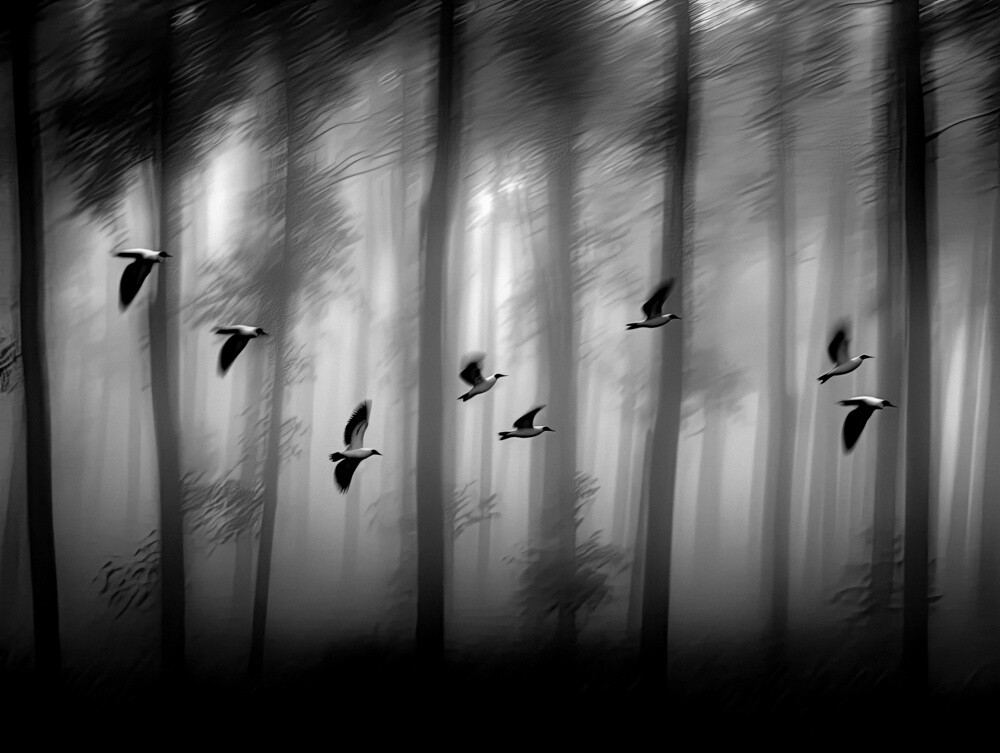 Where do you produce your works? At home, in a shared workshop or in your own workshop? And in this space, how do you organize your creative work?
Where do you produce your works? At home, in a shared workshop or in your own workshop? And in this space, how do you organize your creative work?
My artistic process spans two distinct spheres: the world as my canvas, and the sanctum of my creative space. These two spaces are instrumental in the organization of my creative work.
Documenting and Discovering the World: Much of my work unfolds in the great outdoors, where I immerse myself in the world's diverse landscapes and cultures. Traveling to document and discover the world allows me to draw inspiration from the raw beauty of nature and the depth of human experience. Whether it's capturing the majesty of a remote mountain range or the vibrancy of a bustling market, these adventures become the wellspring of my artistic vision.
Preparing and Executing Projects at Home: Back in my creative sanctuary, I meticulously prepare and execute projects. This is where I delve into post-processing, experiment with various techniques, and refine the concepts inspired by my travels. In this space, I leverage advanced digital tools and, as mentioned earlier, even venture into the realm of Artificial Intelligence to create innovative content. It's here that I nurture my photographs from raw captures into the final, evocative pieces of art.
The organization of my creative work follows a dual rhythm. While in the field, I embrace spontaneity and intuitive exploration, allowing the world to guide my lens. At home, the process is more structured, involving the careful curation and enhancement of images and the development of new artistic projects.
This duality in my creative process is a testament to the synthesis of the external world's inspiration and the internal world's meticulous craftsmanship. Together, they constitute the tapestry of my artistic identity, where the heart of creation is split between the boundless wonders of the world and the intimate confines of my creative space.
Does your work lead you to travel to meet new collectors, for fairs or exhibitions? If so, what does it bring you?
As an artist, my work often takes me on extensive travels, and I seize every opportunity to explore the vibrant world of art. While these journeys may not always be specifically to meet collectors or attend fairs and exhibitions, they provide me with invaluable experiences. I use these trips to immerse myself in the art of different cultures, to visit museums, attend local exhibitions, and participate in various art events.
During my travels, I not only find inspiration in the diverse artistic expressions of different regions but also make connections with local artists. These interactions offer me fresh perspectives, ignite creative dialogues, and sometimes lead to collaborations that enrich my own artistic journey.
How do you imagine the evolution of your work and your career as an artist in the future?
The evolution of my work and career as an artist is a journey marked by continuous exploration and growth. As I peer into the future, I envision several key directions:
Deeper Philosophical Exploration: I anticipate delving even deeper into philosophical and conceptual photography. This involves using imagery to explore profound questions about the human condition, existence, and the nature of reality. My art will serve as a visual narrative that provokes contemplation and transcends the ordinary.
Innovative Collaborations: I aspire to engage in more collaborative projects with artists from diverse disciplines. These collaborations will introduce fresh perspectives, push the boundaries of art, and result in interdisciplinary works that blur the lines between mediums, creating a fusion of creativity that is both dynamic and thought-provoking.
Exhibitions and Global Outreach: While respecting my family and business responsibilities, I'm working on ways to expand my reach to galleries, collectors, and art communities on a broader scale. This involves exploring digital platforms, virtual exhibitions, and other creative avenues to connect with a global audience.
AI Integration: My experiments with Artificial Intelligence will continue to evolve, allowing me to create art that pushes the boundaries of human and machine collaboration. AI will become an integral part of my creative process, enabling innovative and captivating works that challenge artistic norms.
 What is the theme, style or technique of your latest artistic production?
What is the theme, style or technique of your latest artistic production?
The theme, style, and technique of my latest artistic production encompass two distinct projects: "Convoluted" and "Flow."
"Convoluted" is an exploration of mesmerizing color in motion. It employs swirling, hypnotic patterns of color that seem to flow effortlessly. The interplay of shades creates a sense of depth and complexity, inviting the viewer to get lost in the intricate patterns. In "Convoluted," the theme centers around the fusion of color, motion, and emotion, offering a visual journey that resonates with the senses.
"Flow," on the other hand, seeks to capture the essence of energy in motion. This project is an abstract representation of the ever-present concept of 'flow,' where shapes, layers, patterns, structures, colors, and gradients meld together in perfect harmony. It reflects the idea that energy flows like a constant and fluid force, shaping our world. "Flow" is a meditation on the interconnectedness of all things, brought to life through a contemporary abstract style that engages both the visual and emotional facets of the viewer.
Can you tell us about your most important exhibition experience?
While I haven't had extensive exhibition experience to date, I'm currently preparing a significant body of work for my first exhibition scheduled for 2024. This upcoming event marks a pivotal moment in my artistic journey, where I will have the opportunity to share my vision and creations with a broader audience.
The anticipation and preparation for this exhibition have been a profound and transformative experience in itself. It's an exciting venture into the world of showcasing art, and I'm eager to present a collection that encapsulates my artistic evolution and philosophies.
As I work diligently to curate this exhibition, I'm mindful of the impact it will have on my artistic career and the connections it will forge with fellow artists, collectors, and art enthusiasts. This upcoming exhibition represents a significant milestone in my journey, and I look forward to the opportunity to engage with a wider audience and share the stories and emotions behind each of my works.
If you could have created a famous work in the history of art, which one would you choose? And why ?
If I were to envision myself as the creator of a famous work in the history of art, I would choose Jacob Peter Gowy's "The Fall of Icarus." This painting encapsulates a narrative that has always held a profound fascination for me.
"The Fall of Icarus" portrays the tragic moment when Icarus, having flown too close to the sun with wings made of feathers and wax, descends into the sea. The painting is a testament to the ambition of humanity, the pursuit of the extraordinary, and the consequences of hubris.
Creating a work like this would allow me to explore themes of ambition, the delicate balance between human aspirations and the limitations of reality, and the ever-present tension between the desire to reach new heights and the inevitability of facing challenges and consequences. It's a narrative that has echoed through the ages, serving as a powerful metaphor for the human experience, and capturing it in a visual masterpiece would be an extraordinary artistic endeavor.
If you could invite one famous artist (dead or alive) to dinner, who would it be? How would you suggest he spend the evening?
Charlie Chaplin, the quintessential genius of the silent film era, is a luminary in the world of cinema whose artistry transcends time. His ability to convey complex emotions and social commentary without uttering a word is a testament to his unparalleled talent.
What makes Chaplin's work so brilliant is his keen insight into the human condition. He had an uncanny ability to tap into the universal emotions and experiences that connect us all. His films were not just entertainment; they were profound explorations of love, hope, struggle, and the indomitable human spirit.
Chaplin's ability to blend humor and pathos, to make us laugh and cry in the same scene, is a reflection of his profound understanding of the complexities of life. A dinner conversation with him would be an opportunity to glean insights into the art of cinema, the power of storytelling, and the timeless wisdom that his work imparts.
Well, at the end I would like to extend my heartfelt thanks to Artmajeur for the privilege of giving this interview. It has been an incredible opportunity to share my artistic journey, philosophies, and creative vision. I'm truly grateful for the platform to connect with fellow art enthusiasts and to celebrate the world of art. Thank you for your support and for making this experience possible.


 Olimpia Gaia Martinelli
Olimpia Gaia Martinelli

